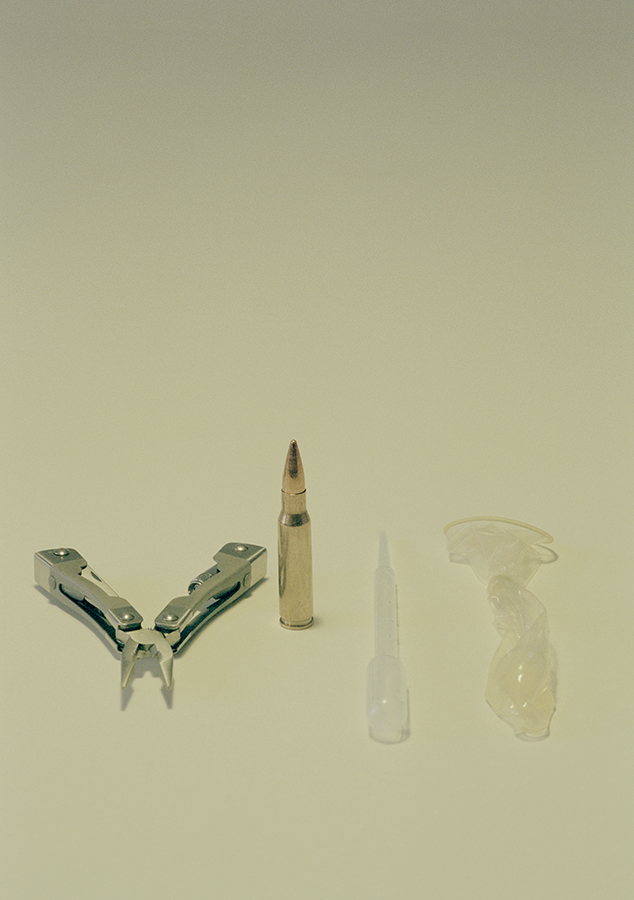
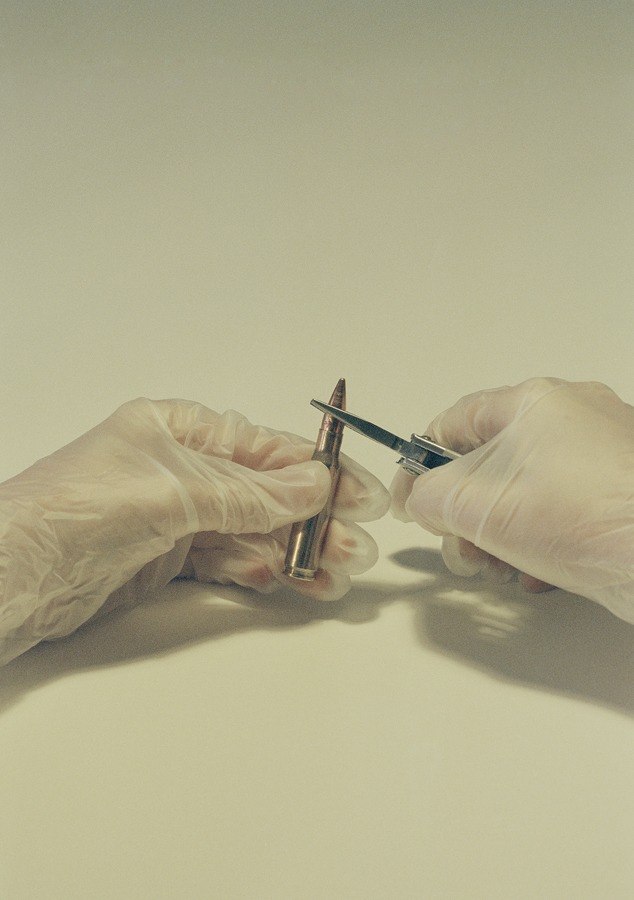
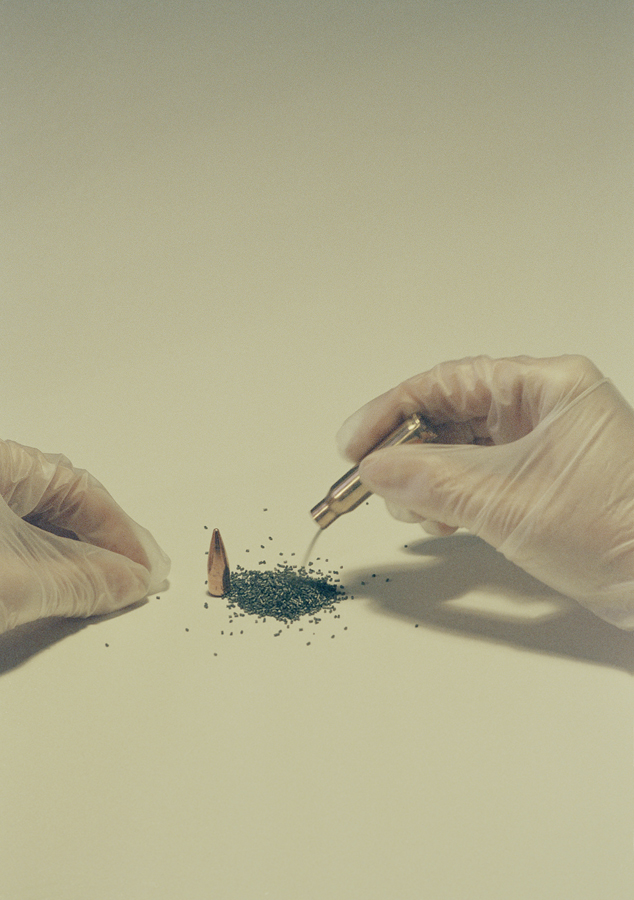
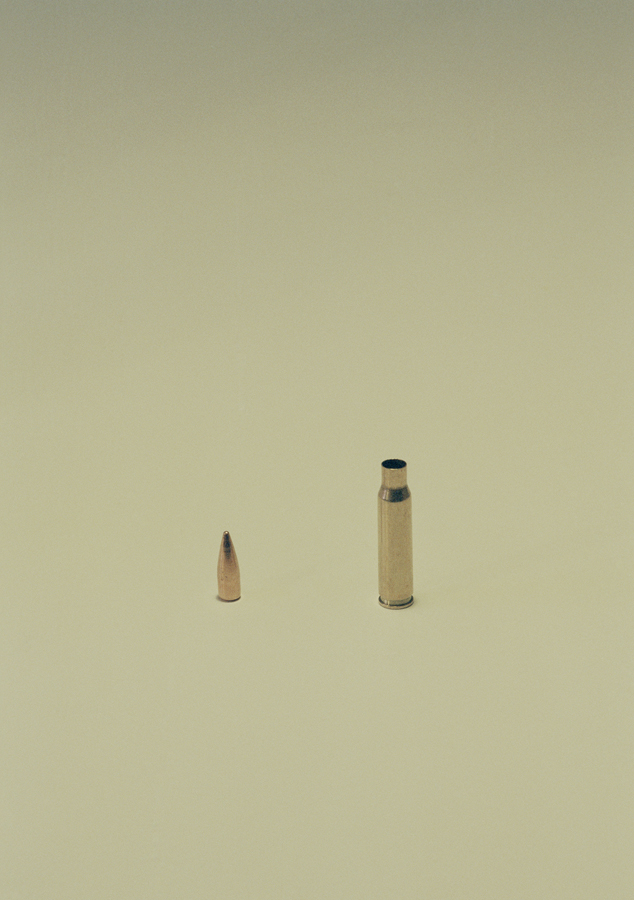
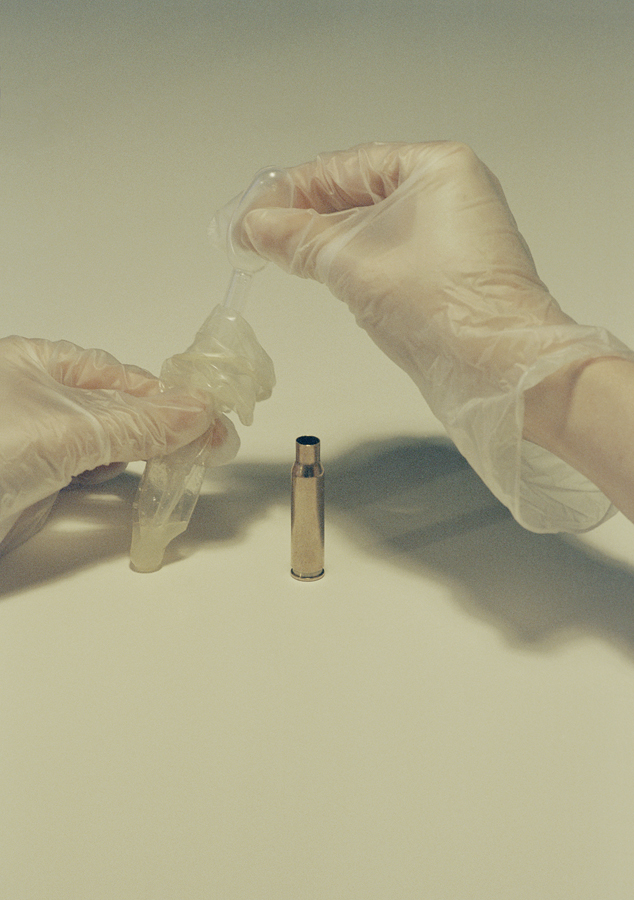
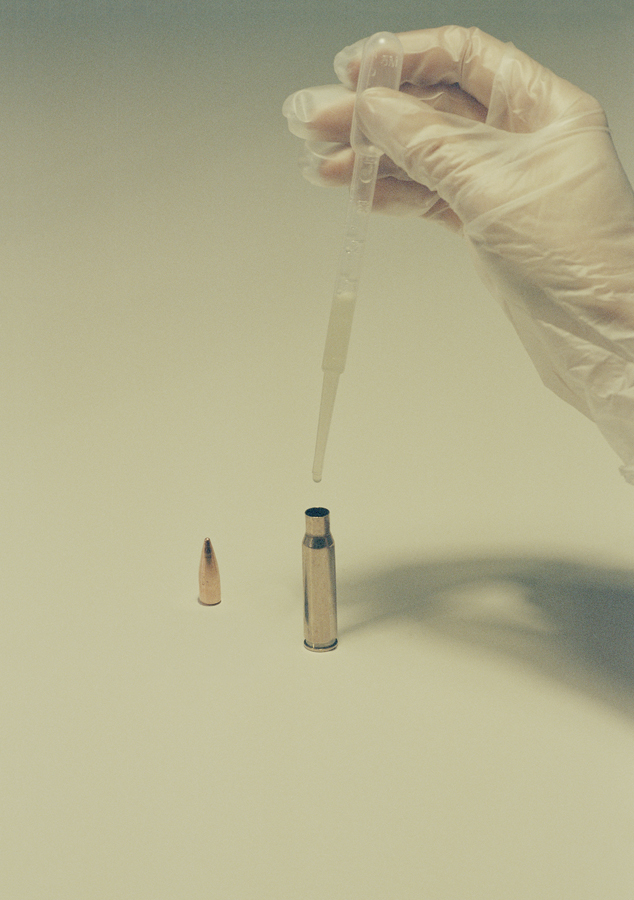
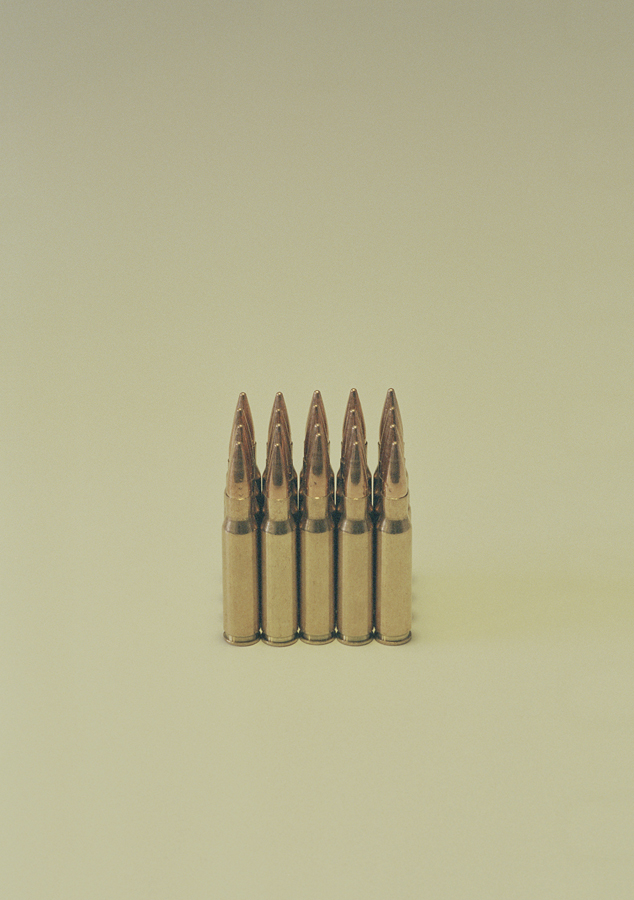
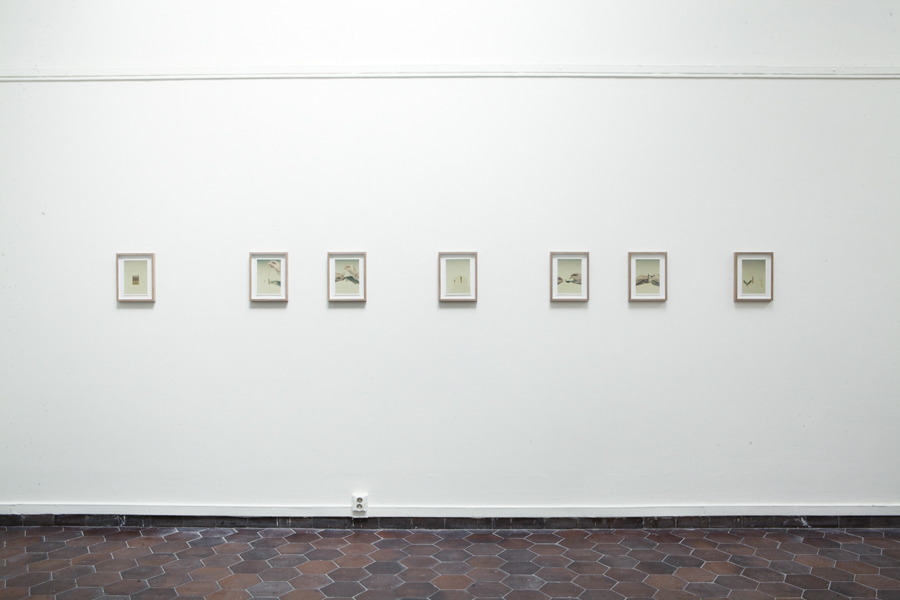
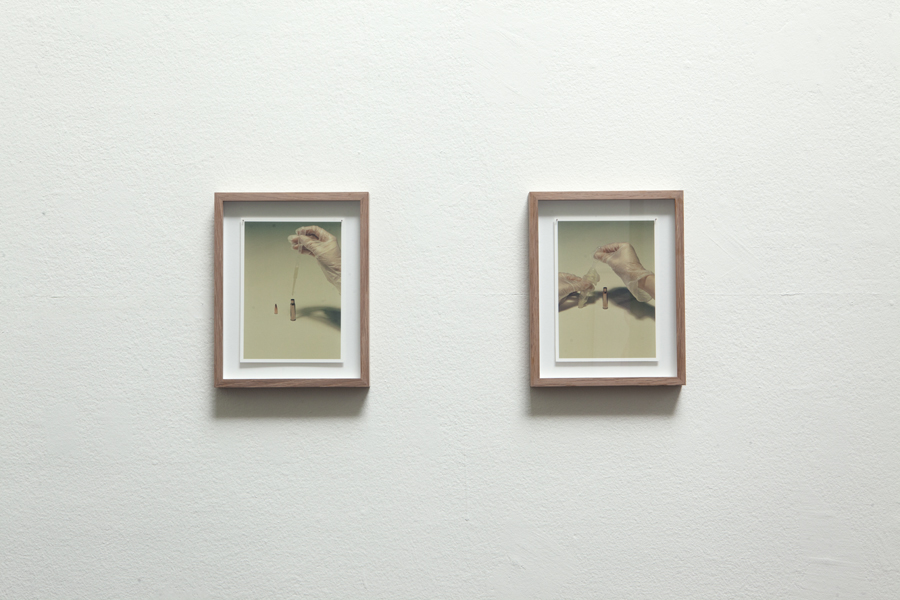
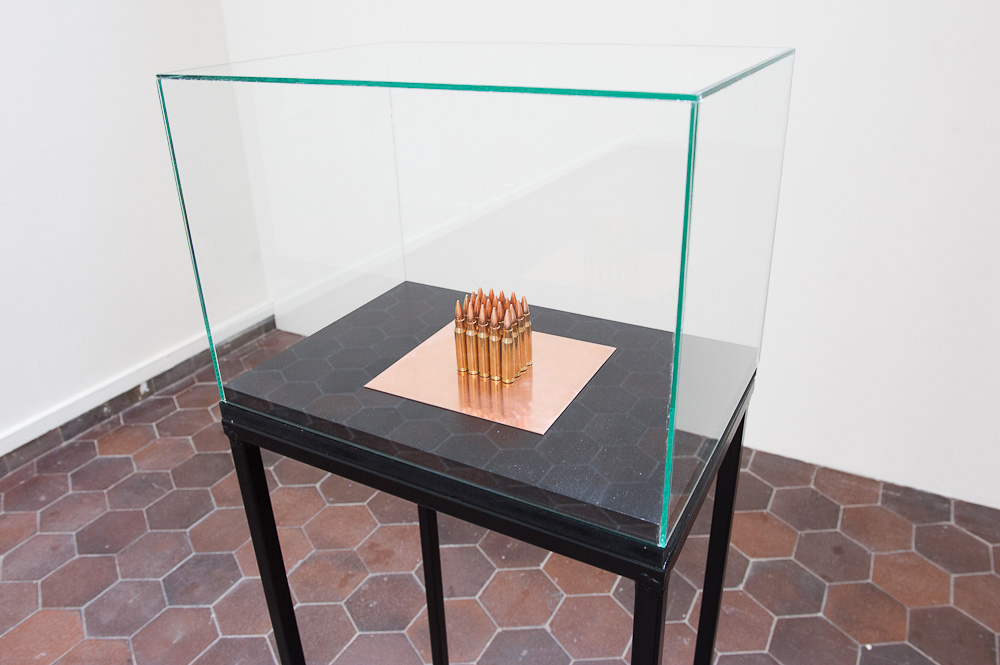
A tale of ballistics and dichotomy

The glistening ammunition stands to attention in a square group within a vitrine. Twenty tiny soldiers awaiting orders from above. Erect and potent, with the tunnel vision only a bullet can have. It is the exam show of the MFA Students in Photography at Göteborgs Konsthall. The year is 2014 and the work of Cora Hillebrand is on display. Her installation consists of seven framed photographs on the wall and the above-mentioned vitrine on the floor. It is a formal presentation, somewhat dry.

Imagine a bullet being put into the weapon, already ripe and with a mission. Delivered through a gun or a rifle, born into the world in a furious release of tension and power with a sole purpose attached to its DNA: to kill.

The photographs have the character of being made for educational purposes. In an institutional greenish light, gloved hands are performing something looking like scientific measures. With a pedagogical clarity we are being visually guided, step-by-step, through the unorthodox process of ‘replacing gunpowder with soldier sperm’.

Not so long ago the common belief was that the male was carrying micro kids in his sperm which he merely planted into the fruitful soil of the female body where the offspring thrived into a semi-functional being before the female gave birth. We know better now. What are sperms without an egg but a messy waste of potentials and ambitions.

How can we interpret the act of ‘replacing gun powder with soldier sperm’? A memory from the past, that would today be categorized as a meme, is popping up in my mind; an image of a rifle with a flower protruding from its pipe together with the sentence Make Love Not War. It is as naïve as genius a statement, why in the world would we succumb to making war instead of love, why rob people of everything they have in the name of a territorial hallucination that every nation state constitutes? But, even The Beatles sang Happiness is a Warm Gun and with sentiment or irony they concluded: When I hold you in my arms … I know nobody can do me no harm.

Is love the opposite of war? Is the world black and white? Of all bad things, dichotomy is one of the top ten most hopeless and less meaningful models of thought. It’s an easy way out, like having a Gin & Tonic instead of going to the yoga class. We need to be able to rearrange our concepts to create more holistic models of understanding. The phallic bullets in Hillebrand’s work would even without their content of sperm reference the male penis. And where there are penises around there are also the potential of rape. The French psychoanalyst Didier Anzieu writes in his book The Skin Ego: ‘Pain is not the opposite of lust or its negative mirror image: their relationship is asymmetrical.’ Just as strategic rape is not the opposite of love making but an anomaly in its most true sense.

It is undisputed that the act of rape is being used as a weapon, instrument or tactic of war. Strategic rape has been utilized as long as people have been fighting each other. To rape the women and girls of your enemies are an extremely effective way of tearing a society apart, inflict mental chaos and above all extinguish the integrity of the females abused. Yet, this act of cynical violence isn’t politically acknowledged as an unlawful tactic, or simply a weapon, and thus the exposed are not defined as victims of war. What a disgrace to our united nations!

The ammunition in Hillebrand’s Untitled work represents death and fertility unanimously. It is an impossible figure, much like M.C. Escher’s drawings of stairs that lead anywhere but where they should. Without descending into the murky waters of biologism the work of Cora Hillebrand could be interpreted as telling a tale about the female body. Samuel Beckett wrote in a famous stage play: ‘They give birth astride of a grave…’ Who are they?

They are the fertile beings of the world. They are missing in Hillebrand’s art work and the lack of the female body echoes throughout the piece, from the beginning of my train of thought until the end. But when something is obviously missing it also becomes evidently present. Edgar Allan Poe stated: ‘The death of a beautiful woman is, unquestionably, the most poetical topic in the world.’ I wonder if it helped him to deal with his own anxiety, to paint the picture of death as something he was definitely not; a beautiful woman. Regardless, we can only conclude that the female body is a battleground. The war on women is a war without territorial claims, economic sanctions or industrial espionage. It is merely ever present, hysterical and extremely tedious.

‘Why not womb envy?’ as Eva Kittay so casually asked in an article dated 1984. And I believe this is just what Cora Hillebrand is suggesting in her Untitled piece from 2014.
By: Annika von Hausswolff, Göteborg 2018-05-11